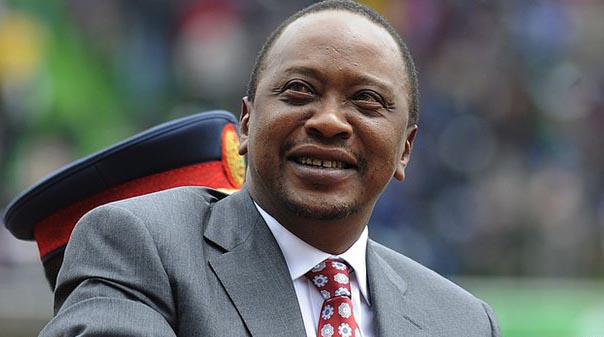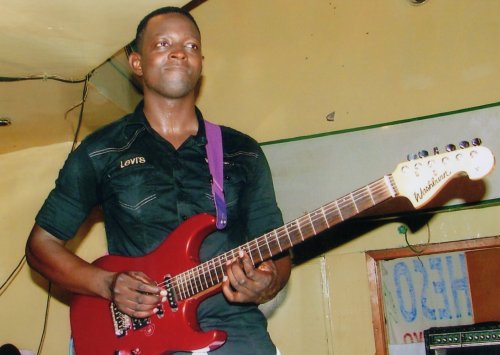How Kenyatta scored big against ICC


Kenyans decided to stand by Uhuru Kenyatta despite being warned by the US ambassador of “the dire consequences of voting an ICC indictee” into power.
The case against Uhuru Kenyatta at the International Criminal Court could have been his downfall. Instead, through clever politics, it could be the making of the Kenyan president, writes James Schneider, with additional reporting from Nairobi by Wanjohi Kabukuru. UHURU Kenyatta has much to thank the International Criminal Court (ICC) for. On December 15 2010, when then-ICC chief prosecutor Luis Moreno Ocampo named Kenyatta as a suspect, it could have been the end of Uhuru’s political career.
Instead, the son of Kenya’s first president, Jomo Kenyatta, turned his court summons to his advantage.
In doing so, he united previously adversarial political groups, brought together many of the continent’s leaders in a strong anti-Western pose, and has given himself the political space to carry through reforms.
The question is now whether he will capitalise on his political successes against the ICC for his personal ends or for Kenya’s.
Healing the rift, winning the presidency
After being accused by the court and announcing his presidential aspirations, Kenyatta teamed up with his co-accused, William Ruto.
In the 2007 election, Kenyatta and Ruto had lined up in opposing political camps — Kenyatta supporting President Mwai Kibaki; Ruto supporting opposition leader Raila Odinga.
They are each accused of orchestrating post-election violence against the opposing camp.
By joining forces, the two men could push reconciliation between their respective ethnic communities — Kenyatta’s Kikuyu and Ruto’s Kalenjin — form a powerful political alliance between two of Kenya’s three largest ethnic groups, and project a united Kenyan front against the ICC.
The court became the bigger enemy.
Any antipathy Kenyatta and Ruto had for each other, disappeared. Rather than hiding from the case against them, they used it in their 2013 election campaign.
The two presented themselves as victims of a plot by the West to undermine Kenya, aided by the United States’ top official for Africa, Johnnie Carson issuing a warning about the consequences if Kenyatta won.
They were able to shift and control the election narrative, leaving Raila Odinga’s slower moving and less energetic campaign in the dust.
It worked. 50.51 percent of Kenyans believed them, and they were elected president and deputy president.
Sovereignty and Pan-Africanism
Since becoming president, Kenyatta has pushed his rhetoric of victimhood further, becoming more forceful towards the ICC.
The current chief prosecutor Fatou Bensouda alleges that her case has been deliberately undermined through the intimidation of witnesses, something Kenyatta and Kenya’s Attorney-General Githu Mugai strenuously deny.
Kenyatta’s legal team has countered with allegations of witness coaching by the prosecutor’s office.
What is beyond legal dispute is that Kenyatta has utilised the concepts of “sovereignty” and “Pan-Africanism” in his battle with the court.
He argued that his appearance at The Hague would be an infringement on Kenya’s sovereignty.
Despite Kenya being a signatory to the Rome Statute that set up the ICC, which explicitly does not exempt sitting heads of state from prosecution, a great number of political commentators have taken up this argument.
In Kenyatta’s speech to Kenya’s parliament announcing that he would attend the ICC in The Hague, The Netherlands, for a Status Conference, he explicitly played with the notion of sovereignty.
He said that he would attend the court only as a private citizen, not as president of Kenya. Despite this being an irrelevant distinction to the ICC, which states that Kenyatta is always a private citizen before it and is not permitted to address the court as the President of Kenya, it garnered him praise at home.
Kenyatta has found solidarity in his cause against the ICC from other African Heads of State.
In October of last year, the African Union held an Extraordinary Summit on the ICC, which was highly critical of the perceived anti-African bias within the court and passed a resolution that no African Head of State could attend it.
President Yoweri Museveni of Uganda, who himself has referred cases against the Lord’s Resistance Army to the ICC, has called for African states to leave the ICC.
His new position echoed a motion passed in Kenya’s parliament last year for the country to leave the ICC.
African states make up the largest bloc of signatories to the Rome Statute. The case against Kenyatta, or at the very least, the ICC’s handling of it, both inside and outside of court, has deeply damaged the institution.
The ICC needs to investigate what went wrong with this case.
If either witness coaching or witness intimidation has taken place, the prosecutor’s office needs rapidly to find new methods. If it does not, it will be hugely dented, perhaps irreparably.
Fulfilling Vision 2030
In September, Kenya re-based its GDP, causing an upwards revision by 25 percent, technically pushing the country into the bottom rung of middle-income status.
Growth has been recalculated, up from 4.7 percent to 5.7 percent for 2013.
The challenge facing the government is to turn this strong output figure into the broad-based sustainable development path Kenya requires to fulfil the goals of the country’s development programme laid out in Vision 2030.
A major plank of this plan, which was launched by Kenyatta’s predecessor Mwai Kibaki in 2008, is East African regional integration via massive infrastructural projects.
The two biggest ticket projects are the Mombasa-Uganda transport corridor and the Lamu Port South Sudan Ethiopia Transport corridor (LAPSSET).
While both projects could add huge value to Kenya and the region, neither of the multi-billion dollar projects is without controversy. For example, the China Road and Bridge Corporation are building the Mombasa-Uganda rail line after Kenya received part-commercial, part-concessional financing from The Export-Import Bank of China (China Exim bank).
Kenya’s anti-corruption activists have raised serious questions about the Chinese company winning the contract, which was won without public bidding. The government responded that this was part of the financing agreement with China Exim Bank.
To reach its Vision 2030 target of becoming a “newly industrialising, middle-income country”, Kenya will have to manage these huge projects, investments and newly found water and hydrocarbon resources transparently and to the maximum benefit of Kenyans. If not, Kenya’s potential fault lines, created by the country’s inequities: those implanted by colonialism, reinforced since independence, and strengthened by contemporary economic change, could lead to violence.
To reduce the risks of violence and move towards a high quality of life for all, Kenyatta has to tackle both the problems his government faces and the vested interests which hinder positive concerted action.
Clearly terrorism, both imported from neighbouring Somalia and home-grown, particularly along the country’s troubled coast, needs to be tackled.
But to do so, Kenyatta must reform his security services, which are still beholden to corruption. Furthermore, he must ensure that any chauvinism amongst parts of the security apparatus are kept in check so that security policies do not become perceived as directed at all Somalis, or Somali-Kenyans or Muslims.
Likewise, Kenyatta will have to overcome enormous resistance to carry out the crucial and vexed issue of land reform, as well as bed down the new system of devolution.
The latter is currently struggling to empower sufficient local citizens, rather than just local elites under conditions of limited administrative capacity.
The former was a key plank of his 2013 election campaign – another piece of clever politics, given that he is one of the country’s largest landowners. — NewAfrican magazine.








Comments